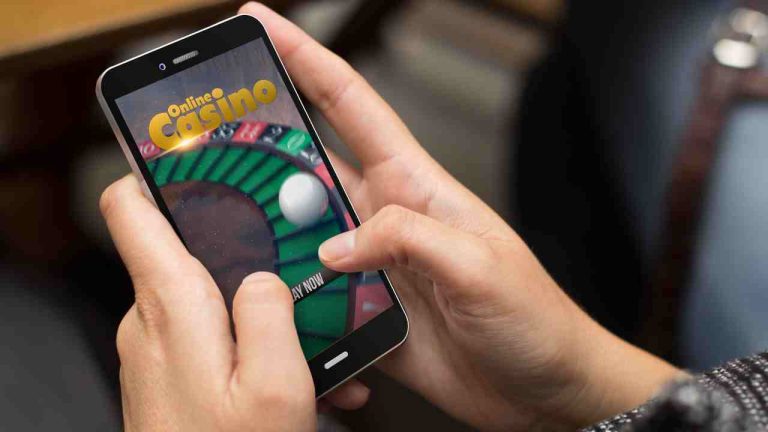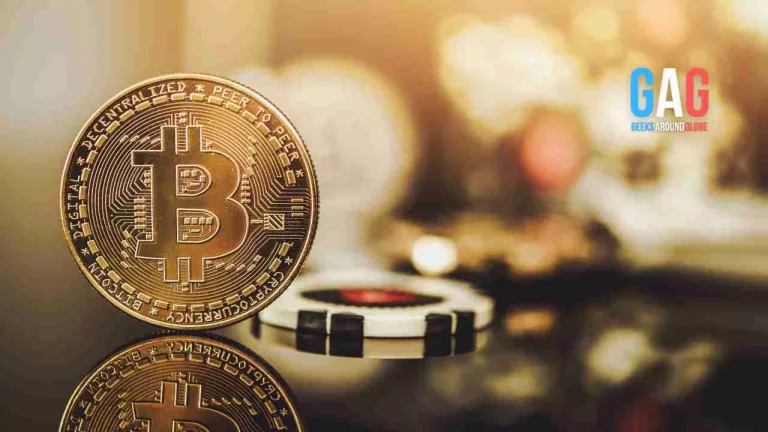Skin trading has become a popular activity in the gaming community, offering players the opportunity to customize their gaming experience by exchanging virtual items known as skins. These virtual cosmetics can be obtained through in-game purchases or through various in-game activities. While many games provide their own built-in trading systems, some players prefer to use third-party marketplaces to trade skins for various reasons. In this article, we will explore the concept of skin trading, discuss the benefits of using third-party marketplaces, and provide valuable tips on how to successfully trade skins.
Understanding the Concept of Skin Trading
The basics of skin trading involve exchanging virtual cosmetic items between players. These items can range from weapon skins and character outfits to unique emotes and avatars. Skins do not affect gameplay, but they allow players to personalize their in-game appearance. There are many sites out there thankfully the team at SkinMarkets has put together all the best sites in a hub where users can compare the best sites to trade in-game items and skins, making them highly sought after by collectors and enthusiasts.
The role of skins in gaming extends beyond mere aesthetics. Skins can signify a player’s skill, dedication, or status within the gaming community. They can also be used as a form of self-expression, allowing players to showcase their individuality and creativity. As a result, skin trading has evolved into a thriving market, with players actively buying, selling, and exchanging skins to enhance their gaming experience.
But let’s dive deeper into the world of skin trading and explore some fascinating aspects of this phenomenon.
One interesting aspect of skin trading is the concept of rarity. Just like in the real world, certain skins are considered more valuable and harder to obtain than others. These rare skins often become highly coveted and can fetch significant prices in the trading market. Players who manage to acquire these rare skins may gain a sense of accomplishment and exclusivity, as they possess an item that not many others have.
Another intriguing aspect of skin trading is the influence of market trends and price fluctuations. Similar to the stock market, the value of certain skins can rise and fall based on supply and demand. Players who keep a close eye on these trends can strategically buy and sell skins to maximize their profits. It’s a dynamic and ever-changing market that requires careful observation and analysis.
Furthermore, skin trading has given rise to a community of passionate collectors. These individuals take great pride in amassing an extensive collection of skins, showcasing their dedication and love for the game. For them, skin trading is not just about acquiring rare items or making money, but about the joy of building a unique and impressive collection.
Additionally, skin trading has created opportunities for creativity and collaboration. Some players specialize in creating custom skins and selling them to others. This allows talented artists and designers to showcase their skills and contribute to the gaming community. It’s a symbiotic relationship where players can express their creativity while supporting the work of talented individuals.
Lastly, skin trading has even led to the emergence of skin gambling. Some platforms allow players to use their skins as virtual currency in games of chance, such as roulette or jackpot. While this aspect of skin trading has faced criticism and controversy due to its potential links to gambling addiction, it remains a significant part of the skin trading landscape.
So, as you can see, skin trading is not just a simple exchange of virtual items. It’s a multifaceted phenomenon that encompasses aspects of rarity, market dynamics, creativity, and even gambling. Whether you’re a collector, a trader, or simply a player who enjoys personalizing your gaming experience, skin trading offers a world of possibilities and excitement.
Choosing the Right 3rd Party Marketplace
The choice of a third-party marketplace plays a crucial role in the skin trading process. When selecting a marketplace, there are several factors to consider. First and foremost, ensure that the marketplace has a good reputation within the gaming community. Look for platforms that have built a trustworthy and secure trading environment over time.
Another important factor is the user base. Opt for marketplaces that have a large and active community of traders. This ensures a wide variety of skins available for trading and increases the chances of finding the specific items you want.
Additionally, consider the marketplace’s fee structure. Some platforms charge fees for listing items or completing trades, while others offer free trading services. It’s important to calculate and compare the overall costs associated with each platform to make an informed decision.
Popular third-party marketplaces for skin trading include SkinBaron, OPSkins, and BitSkins. Each of these platforms has gained popularity due to their reliable services, vast selection of skins, and strong security measures. However, it’s wise to conduct thorough research before choosing a specific platform, as these marketplaces may have different policies and fee structures that could affect your trading experience.
The Process of Trading Skins on 3rd Party Marketplaces
Once you have chosen a third-party marketplace, it’s essential to understand the process of trading skins effectively. The following steps will guide you through the process:
Preparing Your Skins for Trade
Before listing your skins for trade, ensure that they are properly prepared. This involves familiarizing yourself with the current market value of each skin to determine a fair asking price. Research the prices of similar skins on the marketplace to set a competitive yet realistic price for your item. Take into account any wear or condition factors that might affect the value of the skin.
It’s also advisable to take appealing screenshots of your skins to attract potential buyers. Capture the skin from different angles and showcase any unique features it may have. Providing accurate and high-quality visuals will increase the chances of successful trades.
Once your skins are ready, it’s time to navigate the trading process on the chosen marketplace. Carefully read and understand the platform’s trading rules and guidelines to avoid any violations or misunderstandings.
List your skins for trade by creating a listing or auction. Provide accurate and detailed descriptions of your skins to inform potential buyers about their quality, condition, and any special features. Highlight any noteworthy traits that could make your skins more appealing.
Stay active and responsive on the marketplace. Be prepared to negotiate with potential buyers and respond to their inquiries in a timely manner. Maintaining good communication and providing excellent customer service will foster trust and increase the likelihood of successful trades.
Ensuring a Successful Trade
When an offer is made for one of your listed skins, carefully evaluate the proposed trade. Analyze the value of the offered items and consider if it aligns with your expectations. If you believe the trade is fair and favorable, accept the offer. However, if the proposed trade does not meet your requirements, feel free to negotiate for a more mutually beneficial deal.
Before finalizing the trade, thoroughly review the trade confirmation details. Double-check the offered items, ensure their authenticity, and verify their market value. Once you are satisfied with the trade, confirm it and proceed with the transaction.
Throughout the trading process, it’s crucial to remain vigilant and cautious. Be wary of potential scams, fraudsters, and counterfeit items. Verify the reputation and authenticity of the trading partner before engaging in any high-value trades. Utilize escrow services offered by the marketplace to add an extra layer of security to your transactions.
Safety Measures in Skin Trading
When engaging in skin trading, it is essential to prioritize safety and protect yourself from scams and fraudulent activities. Here are some safety measures to consider:
Avoiding Scams and Fraudulent Activities
Be cautious when interacting with unknown traders and avoid sharing personal information or sensitive account details. Beware of phishing attempts, fake websites, and suspicious links that could compromise your account security.
Do thorough research on potential trading partners before engaging in high-value trades. Verify their reputation, trading history, and user feedback. This will help you assess their trustworthiness and reduce the risk of encountering fraudulent individuals.
Ensuring the Security of Your Account
Protect your account by implementing strong and unique passwords. Enable two-factor authentication whenever possible to add an extra layer of security. Regularly monitor your account activity and be alert for any unauthorized access attempts.
Be cautious when downloading and installing third-party applications or mods related to skin trading. Malicious software can compromise your account and lead to potential security breaches.
Making Profit from Skin Trading
For those interested in making a profit from skin trading, it’s crucial to adopt effective strategies and understand market trends. Consider the following tips:
Strategies for Profitable Skin Trading
Stay informed about the latest updates and developments in the gaming community. Keep an eye on new game releases, patches, and events that could affect skin prices and demand.
Embrace long-term investment strategies by acquiring skins with potential for value appreciation over time. Research the popularity and rarity of certain skins to make informed investment decisions.
Understanding the Market Trends
Study the market trends on the chosen marketplace. Analyze the price history of different skins and identify patterns or price fluctuations. Knowledge of the market will help you make more accurate predictions and determine the best time to buy or sell.
Tips for Maximizing Profit in Skin Trading
Diversify your skin portfolio by trading in different games and marketplaces. This reduces the risks associated with relying solely on a single game or platform.
Learn from experienced traders and engage in discussions on forums and community platforms. Networking with other traders can provide valuable insights and tips for maximizing profitability.
In conclusion, skin trading in third-party marketplaces offers a unique and exciting way to enhance your gaming experience and potentially make a profit. By understanding the basics of skin trading, choosing the right platform, following the trading process diligently, prioritizing safety measures, and adopting effective trading strategies, you can navigate the skin trading market confidently and unlock new opportunities within the gaming community.







